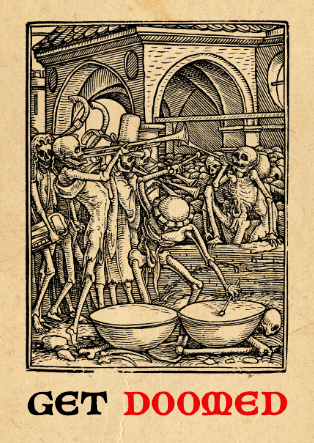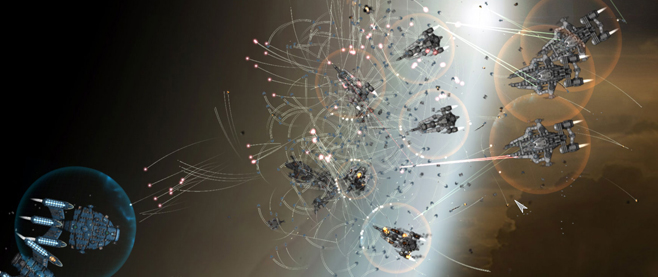Web3 gaming, fad or next step for money in online games
Although the marriage between online gaming and blockchain technology is undoubtedly new, both sectors have combined to transform the iGaming space. Today, there are hundreds of Bitcoin casinos on the market, providing gamers with numerous games, a range of rewards and various opportunities.
However, Web3 gaming has taken the virtual gaming experience a notch higher with the introduction of play-to-earn (P2E) games, which allow players to earn some income by doing what they love. While Web3 gaming is still in its early days, the industry’s futuristic approach to gaming positions it for bigger achievements. The question remains though, whether the Web3 gaming craze will be short-lived or the future of online games? Let’s discuss.
What are Web3 games?
Web3 games are built on blockchain to offer players a decentralized channel to connect with one another and play their favorite games. Some of these games are also known as metaverse games because they operate using virtual reality (VR) instead of the more conventional 3D graphics.
Web3 games may also have P2E features that combine cryptocurrencies and non-fungible tokens (NFTs) to allow players to own in-game collectibles. These collectibles have real-world value, so you can trade them for real money or convert them into valuable items such as merchandise or avatars.
Web3 games typically accept crypto payments, which has now been almost universally accepted across the gaming space. One of the early adopters of this trend was the iGaming industry. With the introduction of crypto casinos, these platforms quickly grew in popularity due to both an increasing interest in crypto markets and growing global demand for online gambling. Like these iGaming platforms, Web3 games typically let you deposit Bitcoin and other cryptocurrencies to access gaming platforms and purchase in-game tokens. Games such as Decentraland and The Sandbox have created native tokens to support easier and cheaper payments.
Web3 games are clearly different from classic games like poker and slots, which do not allow you to own any gaming items. Instead, you can only play for potential winnings or to pass the time.
History of Web3 gaming
Gaming became incredibly popular with the tech boom of the early 2000s. During this period, we saw games like MapleStory and World of Warcraft grace people’s screens. These video games championed human interactions and were the first to introduce tradeable in-game items that people could sell for cash offline.
Following the post-pandemic crypto boom, developers have built on the existing concept of tradeable in-game items. Developers have created decentralized apps (dApps) with unique gaming features to help users access games without intermediaries.
So, even if Decentraland is owned by a team of developers, they don’t have complete control over the game because you can also own its digital items and participate in its governance.
The role of blockchain technology in Web3 gaming
Web3 gaming cannot exist without the support of blockchain technology. The new tech has proven that Web3 gaming is far from being a fad but instead offers an alternative way for gaming enthusiasts to make money doing what they enjoy. Let’s review some of the benefits of blockchain to the Web3 gaming industry:
Decentralized ownership
One of the core features of cryptocurrencies and blockchain technology is decentralization. Web3 gamers get decentralized gaming platforms that enable them to attain legitimate ownership of their in-game materials.
You can buy exclusive gaming items or characters as NFTs. So, no other player can own the same item as you because your ownership can be verified publicly.
P2E possibilities
The concept of play-to-earn (P2E) is at the core of Web3 games. Unlike traditional games that are focused solely on engagement, you can generate actual rewards in some Web3 games using smart contracts. For instance, you can purchase an Axie on Axie Infinity, breed it and put it up for sale on the game’s marketplace.
This trading activity, though unconventional, can be a source of income in some games.
Improved security and transparency
At its core, blockchain is secure and transparent. Web3 game developers leverage these qualities to combat fraudulent activities or other malicious acts in their gaming communities. When the operator announces players’ rewards, you can verify them on the platform to be sure they are real. Blockchain also supports the anonymity present in Web3 games as every user’s information is securely safeguarded.
Multi-platform interactions
Due to their integration with blockchain technology, Web3 games are interoperable. They allow users to move their assets from one supported gaming platform to another. This process improves the players’ experience, as they can combine and collect their rewards and other assets in one place despite playing on different platforms.
Community participation
Community participation and engagement are critical to blockchain technology, and the same is present in Web3 games. With Web3 games, you’re not only a player but also a stakeholder who has a say in the platform’s governance. As a community member, you can share ideas about the game’s future developments and roadmap, making Web3 games democratized and more inclusive.
Challenges of Web3 games
Various challenges can limit the potential of Web3 games. Some of these potential stumbling blocks include:
- Scalability issues may result from the gaming platform’s inability to handle and process large-scale transactions. This may result in delays or congestion that can negatively impact a user’s experience and sentiment.
- Lower adoption is currently ongoing due to people’s limited interest in this gaming category.
- Potential security issues, such as hacking and cyberattacks, may lead to players losing their gaming items or in them being stolen.
- Regulatory challenges may arise because there are no distinct laws regarding Web3 gaming, and cryptocurrency laws are rather unclear. For instance, there are no conversations about anti-money laundering compliance and taxation for Web3 gamers and developers.
In response to these challenges, key players in Web3 gaming are working on solutions. Some have partnered with layer-2 scaling platforms, while others use sharding to boost their transaction processing speed.
Conclusion
The union between blockchain technology and Web3 games is fast-growing, with numerous crypto gaming platforms providing users with a unique experience. These platforms also frequently permit asset ownership, income opportunities and increased community participation.
We can expect to see Web3 games progress further as blockchain technology continues to arm it with the necessary tools to reach the next level.





